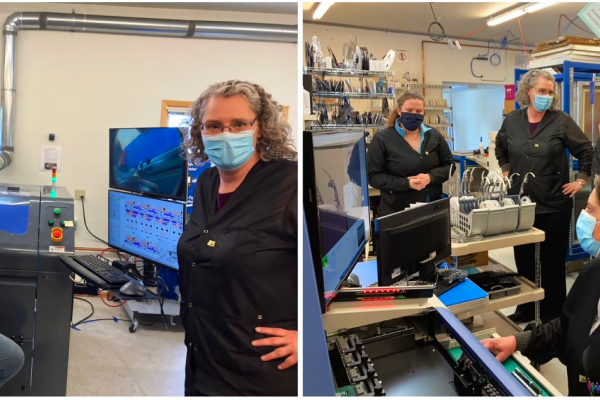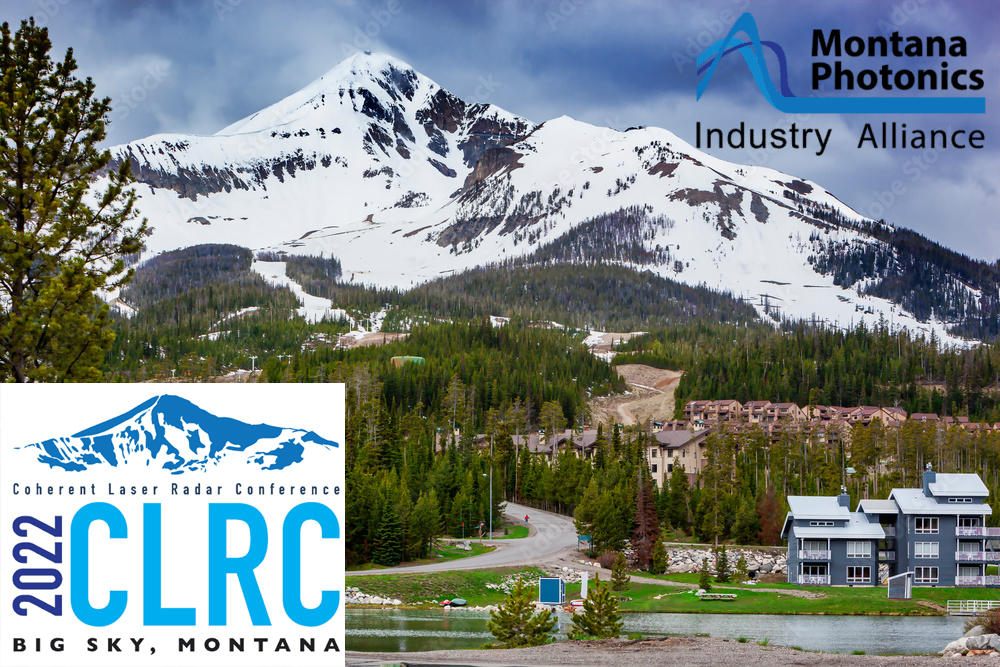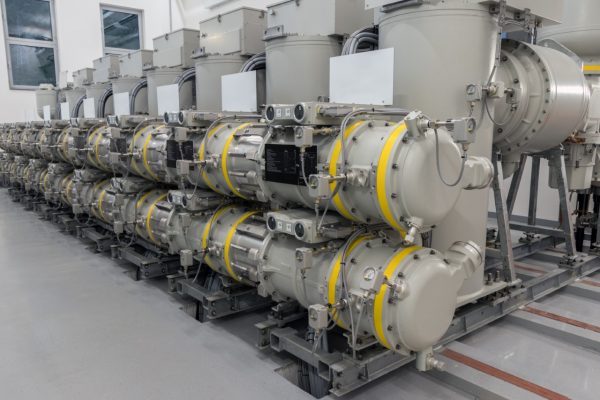
We surprised the Israeli Consul General with high tech electronics in Bozeman.
As a member of the Montana Photonics Industry Alliance, we hosted a tour with the Israeli Consul General Shlomi Kofman. Twenty years ago, he worked for a company that made semiconductor wafer inspection tools. At that time, there were no SMT parts. He remembered hand soldering all the plate-through resistors and capacitors. He hadn’t seen the kind of SMT automation we have nor a Selective Solder or AOI machine. We made an excellent impression.
Mr. Kofman is based in San Francisco and is responsible for the Pacific Northwest region of the US (Alaska, Northern California, Idaho, Montana, Oregon, and Washington). He was here to learn more about the robust photonics and optics presence in Montana. He is looking for opportunities for Montana and Israeli firms in the industry to build mutually beneficial trading relationships.
Montana World Trade Center out of Missoula sponsored the visit.
Subscribe to our newsletter for tips, techniques & product updates.
CASE STUDY: Improved Gas Concentration Model Accuracy in Wavelength Modulation Spectroscopy
Researchers from China have developed a new concentration inversion model for wavelength modulation spectroscopy (WMS) techniques in tunable diode laser absorption spectroscopy (TDLAS) applications. Traditional models do not take into account variations of the modulation depth in the second harmonic signal of the laser, thereby increasing the error of the measurement and decreasing the accuracy of the system. They used an improved model of concentration inversion with modulation depth as a variable parameter. This model produces almost an order of magnitude better RMSE and almost five times better relative error, making this applicable in fields such as industrial and environmental gas monitoring.
Tunable Diode Laser Absorption Spectroscopy (TDLAS) is a popular technique that not only achieves gas concentration measurements with high accuracy but can measure temperature, flow velocity, pressure, and other parameters important to gas monitoring. By using low-power semiconductor lasers that are tunable and narrow-linewidth, the monitoring systems can be lower-cost, real-time, time resolved, and long-term in-situ systems.
Wavelength Electronics’ LDTC0520 laser and thermoelectric controller enables the sensitive measurements for concentration inversion models based on second harmonic valley spacing, useful for gas detection in the commercial world. The stability of the laser diode in gas detection is critical, both in current stability of the injection current and the temperature control.
The 21st Coherent Laser Radar Conference (CLRC) will be held June 26th through July 1st, 2022, at the beautiful Big Sky Resort in Big Sky, Montana, USA. The CLRC meeting will be hosted and organized by the Montana Photonics Industry Alliance (MPIA). Wavelength Electronics is a proud member of MPIA, and we are excited about the conference being close to home.
The local CLRC organizing committee and the CLRC technical committee for CLRC 2022 are both fully committed to holding a successful conference in person in Big Sky, MT. Registration and lodging can be found in the link below. We hope you enjoy the conference and the beautiful Big Sky Resort in Montana.
CASE STUDY: CO Detection in SF6 Using Quartz-enhanced Photoacoustic Spectroscopy
Researchers from China and Italy have developed a highly sensitive and selective optical sensor using quartz-enhanced photoacoustic spectroscopy (QEPAS) for carbon monoxide (CO) detection in sulfur hexafluoride (SF6) decomposition. High-voltage apparatuses, utilizing SF6 as gas-insulating medium, require rapid and continuous monitoring. Detecting CO as one of the SF6 decomposition products allows early diagnosis of apparatus failure.
Detecting CO gas by means of wavelength modulation, second harmonic modulation, and photoacoustic techniques requires high precision and stable control of the quantum cascade laser in the QEPAS sensor. Wavelength Electronics’ QCL driver, the QCL2000 LAB, enabled sensitive measurements with minimal electronic noise from the laser for narrow linewidth from the QCL. The driver also allows analog modulation of up to 2-3 MHz for wavelength modulation and second harmonic modulation in the QEPAS sensor. The stability of the QCL is critical for exact excitation of the gas molecules detected by the quartz tuning fork. The QCL2000 LAB QCL driver instrument enables CO detection at parts-per-billion levels with low noise and stable laser output.
We invite you to contribute topic suggestions, questions, and general feedback. Wavelength will incorporate as much reader input as possible.
Click to Submit





